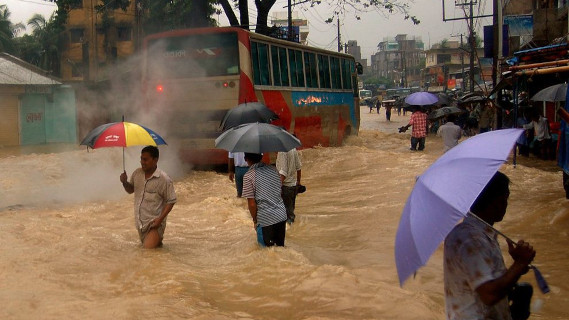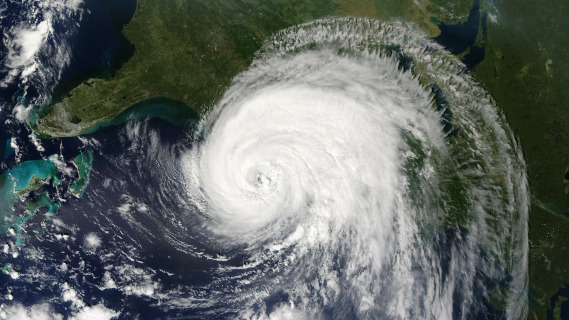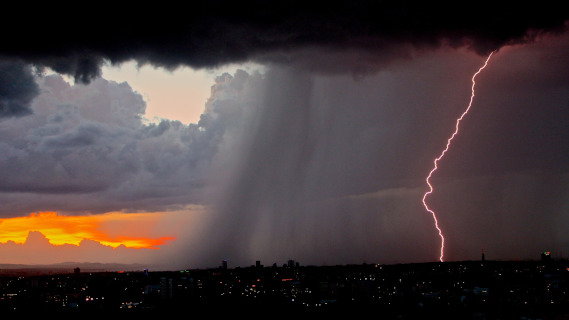World Animal Day
4th October ...

Climate change is clearly leading to changes in weather patterns, in particular the frequency, intensity, duration and timing of weather events and its extremes, this results in an increase in heat records and heat waves, impacting sociologically, ecologically and physically on our environment. From 1951 to 1980 exceptionally high summer temperatures have been recorded in less than 1% of the earth’s surface. In that case, exceptional temperatures were considered to occur theoretically only with a maximum probability of 0.13%, thus very rarely. However these events, rare at that time, have been recorded in about 10% of the Earth’s surface in the period from 2001 to 2010. Moreover, from 1979 to 2013 the annual time span in which forest fires can occur increased on average by about 19% on a global scale, though it must be noted that the triggering factor of forest fires is often of human origin (e.g. negligence or arson).
While it may seem contradictory, climate change is also contributing to more extreme winter: as the warming atmosphere traps more water vapor consequently later into the year when temperatures drop and condensate this vapor it leads to heavier snowfall. This change can clearly be seen in the picture on the right: changes in temperatures caused by climate change influence weather patterns. Despite global warming, therefore, extreme cold episodes can still occur locally, although they are expected to occur less frequently.

Rainfalls and in particular heavy precipitation refers to a phenomenon during which the amount of rain (or snow) experienced in a determined location substantially exceeds what is normal, and it continues for a prolonged period of time. Climate change and global warming can influence the intensity and frequency of precipitations: as the atmosphere warms, the amount of water that evaporates from oceans, lakes, and soil increases which ends up into the air. Scientists have determined that the atmosphere is capable of holding an additional 4 percent of water vapor for every additional 1°F of warming. Consequently the air absorbs more water vapor, the amount of vapor in the atmosphere increases and when it condensates abundant and intense precipitations occur. The impacts of heavy precipitation include the following consequences: soil erosion, crop damage, and increase in flood risk.
In the global average, intense precipitation is also becoming more frequent and more violent, both in dry and humid areas. Currently about 18% of this precipitation can be attributed to global warming. However, the increase in the frequency of extreme precipitation can vary considerably from region to region. The Mediterranean, for example, has overheated significantly in recent decades. As a result, more water evaporates from its waters and is transported northwards thanks to a certain arrangement of high and low pressure areas (mediterranean depression); this phenomenon can lead to an increase in heavy rainfall and flooding in Central Europe.

It is difficult to formulate a universally shared definition of drought because science recognizes and categorizes different types of drought. Natural factors determine where and when drought occurs.
Meteorologists define drought as a prolonged period of dry weather principally caused by a lack of precipitation, but it can also be seen as an extended imbalance between precipitation and evaporation. Global warming leads to a more intense evaporation of soil moisture at the local level and, consequently, a greater probability that in determined areas more intense droughts will occur more quickly. Moreover, since the mid-20th century, the driest areas of the Earth have expanded, especially in Africa, Southern Europe, Eastern and Southern Asia, as well as in many parts of northern, mid and high latitudes. This situation causes serious water shortage for populations located in these areas and also damages to our ecological system.

Due to climate change tropical cyclones are likely to be affected in a variety of ways: for instance strongest storms are expected with an intensification of rainfall and wind speed. However, in contrast a decrease in overall frequency and a poleward extension of where cyclones reach maximum intensity are also among the possible consequences brought by climate change.
Tropical cyclones originate above the oceans from a temperature of 26°C, because they need the impulse of hot and humid air to be formed. With climate change the water temperature increases, and consequently also its evaporation, which means that more energy is supplied to the storms. It is also expected that, due to the increase in water vapor in the air, future cyclones will be accompanied by more intense precipitations. On the other hand, global warming reduces upward and downward air movements, while increasing horizontal air flows, which overlap with each other and differ in wind direction and/or wind speed. This happens for example at higher altitudes in the regions of origin of the Atlantic cyclones in Central and West Africa. This trend can hinder the formation of tropical cyclones, so this is why their total number could decrease.
Climate change and global warming will cause the globally averaged intensity of tropical cyclones to shift towards stronger storms. The intensity of these storms will increase by 2-11% by 2100, and an increase of the order of 20 percent in the precipitation which consequently shall provoke more damages at their passage.

The changes in thunderstorms are already evident when they occur nowadays and the cause is climate change: more extreme short-duration thunderstorms are expected in the future due to global warming. Studies and experts have revealed that rising temperatures will intensify future rainfall extremes at a much greater rate than average rainfall with a tendency for large increases in short but violent thunderstorms also characterized by strong wind or whirlwinds. These extreme weather events will cause billions of euros worth of damages.
Thunderstorms result from the interaction of a number of different factors: in order for very strong thunderstorms to occur, it is always necessary a sort of “lifting mechanism” that triggers the upward of the air, or strong overlapping horizontal currents, different from each other in wind direction and speed. In particular, the upward movement of humid and warm air plays an important role as an energy source in the formation of storms. The water vapor contained in this air condenses, releasing thermal energy and thus intensifying the storm formation process. Global warming causes the atmosphere to heat up and thus absorb more moisture, then more energy is released during condensation. Therefore it is expected that more intense thunderstorms will occur when these weather conditions manifest.
However due to the numerous influencing factors and incomplete detection of thunderstorms, it is difficult to formulate a universally shared opinion about their global development and associated meteorological events.
Once thunderstorms have formed, they have the potential to become even more intense and have more devastating consequences than they already have in the current climate.

Temperature is the major factor which determines whether precipitation falls to the ground assume the form of snow, ice, or rain.
Rising temperatures are already impacting snowfall patterns. Common sense tells us that a warmer climate will have less snowfall because warmer temperatures are likely to make the snow melt and become rain before it hits the earth, however counter-intuitively, global warming could actually cause colder regions to experience greater snowfall in the near to medium term. The reason why this can occur is because warmer air “holds” more moisture (studies have shown about four percent more per degree Fahrenheit) and that additional moisture then can fall as snow when temperatures are below freezing. What people do not know about snow is that seasonal snow in particular is an important part of Earth’s climate system. When snow melts, the water helps fill rivers and reservoirs in many areas. Noteworthy, the changes in the amount of snowfall, and timing, could affect the amount of water available for people to use.
Snow acts like a blanket protecting the soil and its organisms from variability in the air temperature. Noteworthy when soil freezes, it cannot easily absorb new liquid water, and this leads l to more runoff and potential flooding. As a higher fraction of precipitation falls as rain rather than as snow, this also increases the risk of floods.

Extreme heat waves are increasing in frequency and intensity because of global warming. Climate change is making heat waves, which were sporadically events in the past, longer, more extreme, and more frequent than before.
A new study, published July 26, 2021, shows how record-shattering, long-lasting heat waves are growing increasingly likely. Heat waves are something natural but intensified by the emission of greenhouse gases. Notably, during the summer in the Northern Hemisphere, the northern half of the planet is tilted toward the sun, which increases daylight hours and warms the hemisphere.
Heat waves occur where atmospheric pressure above an area builds up due to a high-pressure system (anticyclone). This creates the conditions that cause a sinking column of air which compresses, heats up, and oftentimes dries out. The sinking air acts as a cap (also known as heat dome), trapping the latent heat already absorbed by the landscape thus provoking a further increase of air temperature. Though this happens every summer, the effects are now amplified by global warming. This is alarming for all the consequences heat waves provoke such as for example fires, not to mention the complications these waves bring to human health: when it is very hot the human body is unable to cool itself effectively, in fact normally our body can cool itself through sweating, but when humidity is high, sweat will not evaporate as quickly, potentially leading to heat stroke and to other complications (heart related) especially for eldery.